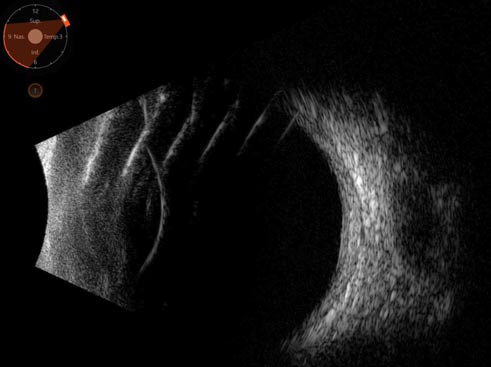
Ocular and Orbital Ultrasound
This course covers when and how to appropriately use ultrasound for examination and diagnosis.
CONTEXT
The ocular study with ultrasound has existed for many years, and despite the appearance of new types of imaging studies, it is still valuable for diagnosing ocular pathology.
Despite its validity, not all ophthalmologists know its precise indications, scope, and limitations, much less the correct use of the equipment and the interpretation of the images.
This course aims to fill a gap in the training of ocular ultrasound.
THE DETAILS
Intended for: ophthalmologists, ophthalmologists in training, and optometrists (from countries where optometry is recognized)
Duration: Approximately 2-4 hours a week for 8 weeks (depending on previous knowledge)
Certificate: 16 hours of PAAO Continuing Medical Education on completion
OBJECTIVES
- Describe the possibilities and limitations of ocular ultrasound in modes A and B
- Explain the basic physical principles on which its diagnostic potential and its limitations are based
- Perform a systematic and comprehensive diagnostic examination of the eyeball and orbit
- Differentiate normal from abnormal findings
- Make a presumptive diagnosis based on real-time images provided on video in the course.
- Recommend other complementary studies based on the findings
PROGRAM
- Sound physics
- Scanning technique
- Representation of ultrasound in ophthalmology
- Vitreoretinal pathology
- Eye trauma
- Analysis of intraocular tumors with ultrasound
- Study of the papilla and the optic nerve with ultrasound
- Study of orbital tumors, muscles and Grave’s disease
COURSE MATERIALS
- Study guides that facilitate the student’s learning process.
- Audiovisual lectures prepared by the teaching team on each topic. These will be available for online reading and in a save/print version.
- Reading material, available in Spanish and/or English in pdf format.
- Concept maps, synoptic charts, tables, and memory aids
LEARNING ACTIVITIES
Application activities are used throughout the course consisting of:
- Multiple-choice questions
- Open-ended, self-corrected questions with checklists
- Question and answer forums
Each module will have a final exam that must be passed to move on to the next module. The number of attempts is unlimited, but must be passed to move on to the next module.
The activities will promote the exchange and use of students’ knowledge and experiences and facilitate applying new learning to professional practice.
The teachers in charge of the course will accompany, guide, and encourage the learning process in the individual instances and the collective learning interactions.
Meet Your Faculty
Over 7 distinguished experts contributed to this course. Learn more about them.
PAAO Member
Resident/Fellow
$100 USD
$130 USD non-member
life-time access
forum support
printable study materials
PAAO Member
Ophthalmologist
$150 USD
$200 USD non-member
life-time access
forum support
printable study materials
Ophthalmic
Technician*
$150 USD
USD non-member
life-time access
forum support
printable study materials
*Residents/fellows must submit a letter from their program.
**Technicians must submit a letter from an ophthalmologist.


